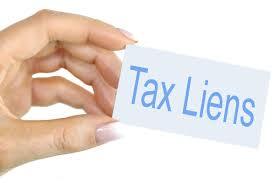
Tax liens and levies typically come into play when you do not pay the taxes you owe. Should you find yourself in this position, it is imperative to comprehend what steps the IRS can take. In this article, we will highlight what tax liens and tax levies are. We will also discuss how they function. Let’s begin!
A tax lien is used by the IRS to make a legal claim against any property you own. This is typically used to secure payment of your tax debt. This can include any property you purchase after the lien has been put into place by the IRS. You should note that a tax lien doesn’t seize your property. It typically occurs within 10 days of you getting a notice of owed taxes from the IRS. This notice comes with a payment demand and serves as a notification that a tax lien will go into effect.
The IRS could also issue what is known as a Notice of Federal Tax Lien, which is a document that goes into your public records. It lets creditors know about a federal tax lien on your assets. The IRS typically notifies you within 5 business days of the first filing. During that time, you will receive a notice of the lien filing as well as a letter that describes your right to a CDP Collection Due Process hearing. This hearing is to discuss the lien and how much you owe. It is also optional.
The IRS sends you a bill demanding full payment of any back taxes when you file a tax return, and only when you don’t pay the taxes in full do you get hit with a tax lien. This means you can avoid tax liens by paying what you owe in full. Nevertheless, this might not be possible to do depending on your financial situation.
If you are unable to pay your tax bill in full, you shouldn’t wait for the tax lien notice to arrive. Fortunately, the IRS offers various programs for taxpayers who are unable to pay the taxes they owe. You can enjoy options such as, asking the IRS to delay collections, applying for an offer in compromise, or applying for an instalment agreement.
A tax levy is typically the next step in the collection process. It occurs after the IRS has placed a tax lien on your property. The IRS might levy a range of assets:
Houses
Cars
Job wages
Tax refunds
Money in your checking account
The IRS then converts your assets into cash which is then used to pay down the tax debt you know. That being said, the IRS doesn’t place a levy on your property in the following scenarios:
If the IRS determines you cannot pay your debt due to economic hardship
If you have a pending or current offer in compromise or instalment agreement
If you have a tax lien and don’t pay your tax debt, you shouldn’t be shocked that a tax levy might be on the way. However, before your property is seized by the IRS, there needs to be certain requirements met under stringent circumstances. The first step is the IRS assessing just how much tax you owe and then sending a Notice and Demand for Payment letter.
If you don’t pay the balance, then the IRS sends a Final Notice of Intent to Levy and Notice of Your Right to a Hearing. This typically happens 30 days before the levy goes into action.
FOR MORE INFORMATION ON HOW PAT RASKOB CAN BEST HELP YOU WITH YOUR TAX FILING NEEDS, PLEASE CLICK THE BLUE TAB ON THIS PAGE.
THANKS FOR VISITING.
